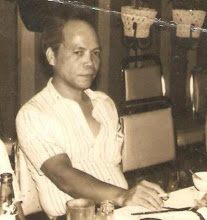The Vanishing Art of the BALAGTASAN
Modern technology is slowly ringing the death knell for the balagtasan, a poetical joust initiated by pre-war poets in memory of Francisco Baltazar or Balagtas, acclaimed “king” of Tagalog poets and author of the classic awit (metrical romance) Florante at Laura. Ironically, the vehicle that should have catapulted the balagtasan to posterity was the very same one that hit and maimed it, leaving this literary form a ghost of its previous self. First it was the radio, then the movies, and now television. These three “miracles” of mass communication have either dissipated or killed outright the Filipino’s interest in the balagtasan.
My grandfather used to relate how the balagtasan would enthrall the barrio folk of his day. For lack perhaps of the means of entertainment, the balagtasan dominated the scene in the 1930’s. No fiesta or celebration in those times would be called successful without it. Poets like Jose Corazon de Jesus (“Batute”) and Florentino Collantes were accorded hero-worship. People, young and old alike, followed these two “superstars” wherever they held tournaments-in stadium, on makeshift stages, and even in cockpits.
“Jose Corazon de Jesus (Batute) was the better one,” my father appraised. Collantes was excellent in satire, but Batute had grace in delivery, not to mention charismatic good looks.”
Jose Corazon de Jesus, proclaimed “Hari ng Balagtasan” died in 1932, Collantes inherited the crown, but was subsequently assailed by plucky contenders. But this only served to whet the public’s-----------for more rousing debates, adding luster and fame to the mambabalagtas.
Interest in the balagtasan was fired by the late Lope K. Santos, author of the first grammar book Balarila. A politician, Santos was appointed governor of Nueva Vizcaya and eventually elected senator. His masterpiece, “Banaag at Sikat,” evidences social awareness and is the prototype of later socialist works.
Almost always, the balagtasan covered topics of social significance. The tide of nationalism, spurred by the likes of Quezon, Osmeña, and Recto had overflowed into other realms. The balagtasan proved to be an effective venue to air prevailing patriotic sentiments. Questions like, “Alin ang higit na dapat dakilain, bayani kahapon o bayani ngayon?” were openly debated with gusto.
After his election as President of the Commonwealth, Quezon encouraged the holding of balagtasan jousts on such occasions as Labor Day or on the commemoration of the Cry of Pugadlawin. Cash prizes and awards for winners, whether writing or orally delivered, were given by the government.
The poets or mambabalagtas were literally mobbed by the people as soon as they stepped on the hurriedly-erected stage near the glorieta or the patio of the barrio chapel. Since the public address system was still a rarity, the mambabalagtas argued at the top of their lungs. Domingo Raymundo, a bitter rival of (‘Batute’), and subsequently of Collantes had a powerful voice that could reach several decibels. Resembling a Negro, with his swarthy complexion and white curly hair, he was usually the butt of jokes and ridicule of rude listeners. But the hot-tempered Raymundo would get even with his hecklers through magnificient counter-strokes of his plosa (impromptu verse). He would say:
“Bakit kayo humahalakhak, bakit kayo nagtawanan?
Kayo ba’y nakakita ng payaso sa tanghalan?”
Most often “Batute” and Collantes, and later Collantes and Raymundo, would often disregard the prepared script, ask for the crowd’s instant choice of topics, and proceed with their poetic wranglings.
This unique way of debating in verse had its roots in the so-called duplo. In reality, balagtasan is the expanded and more sophisticated form of the duplo. A duplero turned mambabalagtas has the skill, the cunning, the sharp wit mastered from years of reading the corridos and duplos of earlier bards, and polished in the usual dupluhan held during wakes or intimate gatherings. For added thrills, duplos from other towns and barrios were pitted against each other as if they were fighting cocks.
But duplo is slightly different from the balagtasan that it is shorter, its subjects




...Who is the five author or writer in "balagtasan"??...
ReplyDeletepls..answer ..
uNO qUaTRo...:)